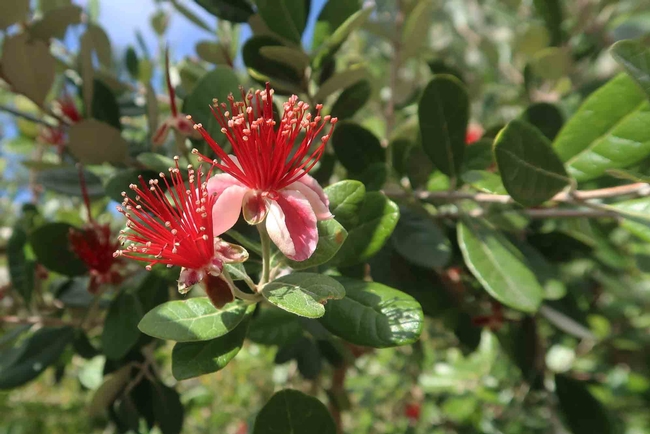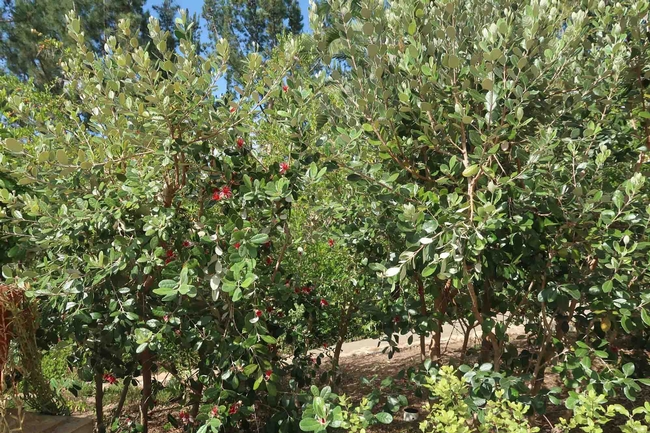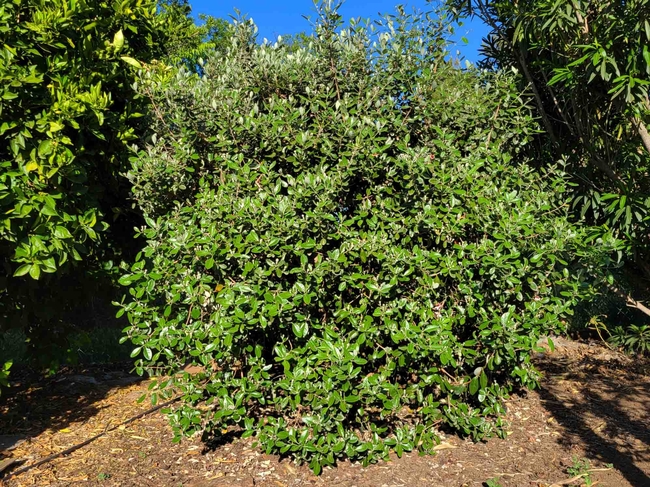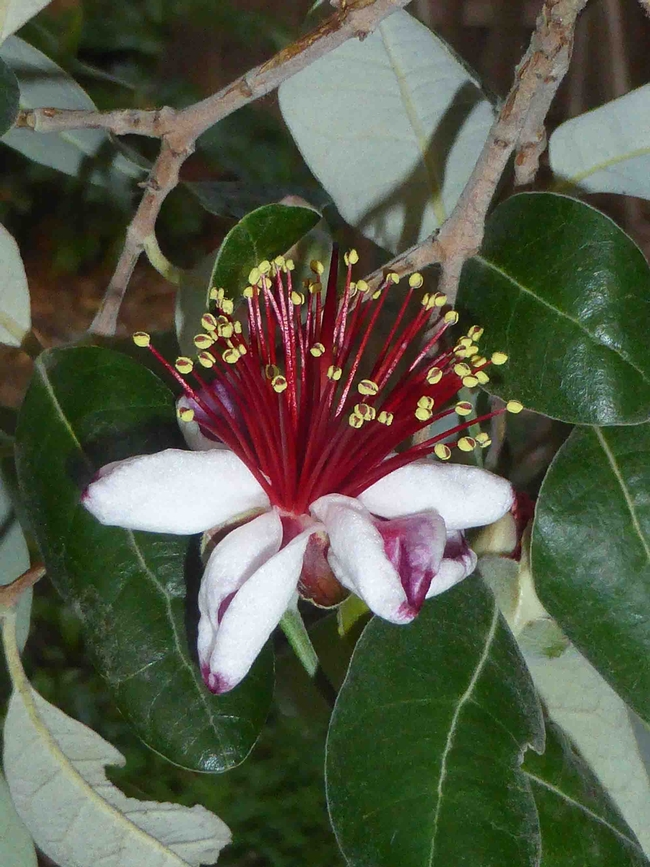Feijoa (Feijoa sellowiana O. Berg.) or Pineapple Guava is an evergreen subtropical shrub or small tree that produces an aromatic edible fruit with a somewhat pineapple flavored pulp. Originating in Southern Brazil, Uruguay, Paraguay and parts of Argentina, it has been grown in California for decades as an ornamental shrub. Prominent French horticulturist M. Edourd Andre brought the feijoa to Southern France from South America in 1890. Hearing of this new attraction on the Riviera, Dr. F. Franceschi imported seedlings of the Andre selection to Santa Barbara in 1901. These early seedings were the parents of most of the older varieties grown in southern California. Since these early days, separate importations of seeds and plants from South America have led to the selection of additional varieties.


In its native climate in South America, temperature and rainfall are very similar to large portions of California. Feijoa is hardier than many other subtropicals, having successfully withstood temperatures as low as ten degrees. It will grow from southern Oregon to the Coachella Valley but is unlikely to fruit in extreme climates. Plants grow well in the interior valley, but fruit has been reported to be more flavorful in cooler coastal areas.

Feijoa fruits mature over a long period of time and at different rates. Determining when a fruit should be picked is difficult even with experience. Color is the best guide, especially when coupled with "touch picking"-- that is, touching each fruit and harvesting only those that readily detach. At least six and possibly eight or nine pickings will be necessary over time to harvest fruit at optimum maturity. This requires attention to detail but provides a light fruit supply over a two- to three-month period. Picking up fruits that have naturally dropped to the ground isn't a satisfactory harvesting method because internal fruit damage occurs and this damage will appear later as brown soft spots on the fruit's interior.

Although it's been grown in California for over 120 years and has gone through three rounds of commercial plantings during that time, it has never proved to be a significant commercial success. The feijoa will most likely find its greatest usefulness as an attractive and showy ornamental in home landscape plantings.
UC Master Gardeners of Butte County are part of the University of California Cooperative Extension (UCCE) system. To learn more about us and our upcoming events, and for help with gardening in our area, visit our website. If you have a gardening question or problem, email the Hotline at mgbutte@ucanr.edu (preferred) or call (530) 538-7201.